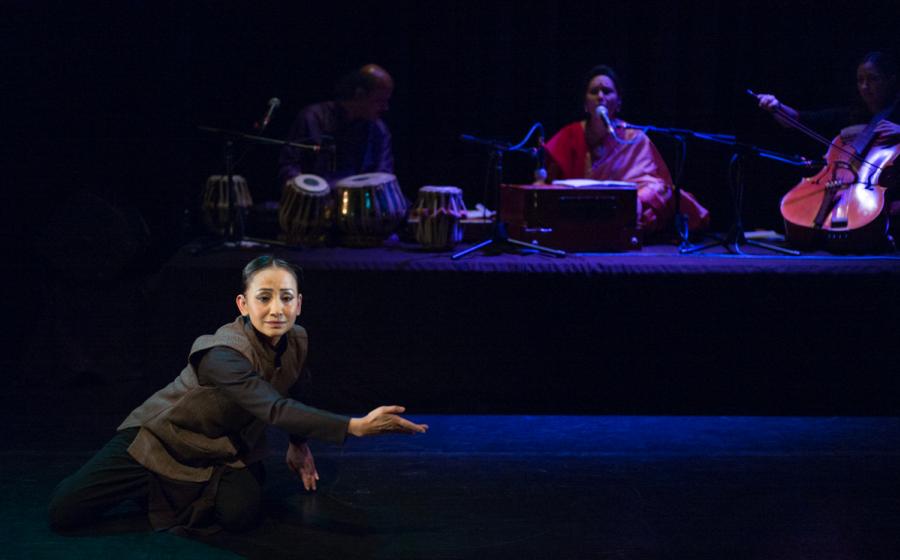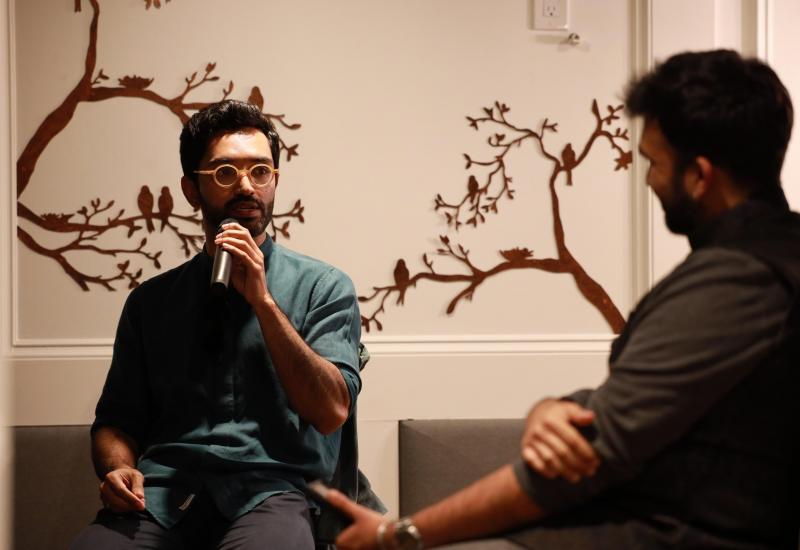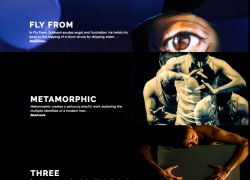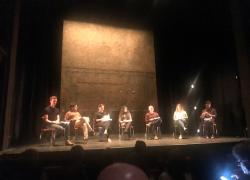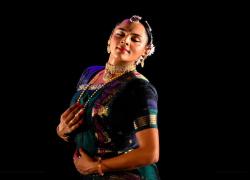Dancing for Change I: Aakash Odedra and Amina Khayyam
Can dance effect social change? Donald Hutera interviewed four dancers whose work engages with difficult social and political issues. We begin with the responses from Aakash Odedra and Amina Khayyam. Arunima Kumar and Subathra Subramaniam respond in Part Two.
It was once my habit to ask, semi-jokingly, various choreographers I was interviewing if they felt dance could possibly create peace on earth. For me the answer to this rather ridiculous query was a strong, although qualified, no. My point was to try to induce thoughts about both the limitations and potential of any art form to effect social change. This would, of course, have to include dance-based performance.
‘…a transformative impact…’
Questions of world peace aside, I’m convinced that dance of any stripe can exert some kind of a transformative impact on those who watch it. It can also tackle head-on a range of issues relevant to the way people behave and learn about themselves, each other and the world. Based on the works they’ve made, and are continuing to make, I suspect that the South Asian dance practitioners interviewed here might share that view. Each was sent a handful of questions, listed just below, meant to trigger considered and articulate answers. These have been shaped into what amounts to a continuous stream of thought by four highly intelligent and gifted individuals.
The Questions
What have been some of your motivations for creating dance-based performance, and how have you gone about finding actions and movement that might best realise the subjects and themes that interest you?
Can dance express complex ideas and a multiple viewpoint – the pros and the cons – of any issue? Or do you feel it’s enough to raise awareness via a powerful narrative with a clear storyline?
How have audiences responded to your work, and how do dancers or other collaborators feel they’ve contributed to the debate?
What are some of the insights you’ve gained from making your work, and how does this feed back into what you will continue to create?
The Replies
Aakash Odedra
Aakash Odedra’s new touring work #JeSuis premières in Leicester in February 2018. The title of this ensemble dance-theatre piece was inspired by the hashtag #JeSuisCharlie that trended internationally following the 2015 attack on the Paris-based weekly satirical magazine <I>Charlie Hebdo</I>. This the first group work from a dancer and choreographer widely regarded as one to watch, and was shown as a work-in-progress at the British Council Showcase in Edinburgh in August 2017.
“…terror incidents…the migrant crisis…”
“In 2012 I did a show in Istanbul and also delivered a workshop at Mimar Sinan University. I met so many committed dancers there. Their raw energy stuck in my head. I felt that should I ever make choreographic work it would be with them. Fast-forward a couple of years: my company was fortunate to receive R&D money from Arts Council England to work with dancers I chose, and on my own terms. I spent a lot of time with these Turkish dancers, getting to know them more intimately. At the time there were a number of terror incidents back-to-back, the migrant crisis in Syria and Iraq and the change in political climate in Turkey all in close proximity. I could see their mood was being affected, particularly by what was happening in Turkey. I felt I could use their energy and situation to make a piece that reflected their story.
“That is how #JeSuis began.
“…we tried to find meaning in what’s happening.”
“I come from the world of kathak and the dancers from a contemporary background. I wasn’t there to impose my style of dance onto them. They were already very eloquent in their bodies and in what they had to say about the situation in which they live. What they’re experiencing – mass movement of people, mainstream media misrepresentation, civil liberties under threat, freedom of expression being curtailed, identity politics, nationalism – is happening in other parts of the world. As a choreographer I’ve been an outside eye, a provocateur, setting tasks from which they make movement. Supported by a dramaturg, I imagined scenarios in order to build an arc of scenes which they filled. The dancers provided source material from which we tried to find meaning in what’s happening.
“Dance can do anything the storyteller imagines, but a choreographer’s biases do come into play. While a theory of multiple viewpoints could be true, in practice it would be difficult to achieve. You get a sense of bias, even in a BBC documentary with ‘balanced views’. I’m sure my own biases have helped shape #JeSuis, conditioned by my own value system, environment and interactions with the world. #JeSuis is my view of the situation.
“…passports…confiscated…dancers…imprisoned… a real risk.”
“Early on there were some questions about the long-term implications for the dancers. We asked them how secure they felt should the situation in Turkey deteriorate, especially if the work we made is explicit in its criticism and tours significantly. It would be problematic for them and us should, for example, passports be confiscated or, much worse, the dancers be imprisoned. This is a real risk. We’ll consider all the options very carefully.
“An artist is like a party politician…”
“An artist is like a party politician: you have a viewpoint and express it. People don’t have to agree with it; you just have to be true to what you believe and make that central to the artistic process. But politics is a complex game. Our version of politics in #JeSuis definitely has an opposing side. Think about this: Trump won on what was practically a 51/49 per cent vote, and Brexit and Erdogan’s referendum were the same or similar. This means that our work, which may be considered lefty-liberal, perhaps only speaks to half the population. I read recently that 96 per cent of people working in the creative industries voted to remain in the EU. Given that as a country we voted to leave, it makes me think that we in the arts are not in the majority, and that a work like #JeSuis might be preaching to the converted. A potential pitfall is that it isn’t reaching the other side and is therefore not inclusive.
“What people take away from #JeSuis is important to us. Even though it’s in its infancy, so far it’s been favourably received by the general public. Motifs in it resonate beyond the show. We’ve been working on ideas and structure, theatricality and narrative; we know there’s more scope for movement-based choreography and character development. This is the consistent feedback. Before the première we’ll meet as a creative team to gather this feedback and measure it against what we expect of ourselves and how true the work is to us.”
“...to stand for what’s right…”
From a #JeSuis cast member who has asked to remain anonymous:
“For me some of the most memorable, touching moments of #JeSuis aren’t found in the performance itself, but in meetings I’ve had with the audience afterwards and in the incredible <I>human</I> response that the work has generated. Until then I didn’t realise the impact we were having. It was only when some brave members of the public opened up and decided to share things they’ve gone through in their lives, which they saw mirrored in the performance, that I started to understand the extent of what we’re doing, and our responsibility. It’s as if being part of this project, and connecting with people through a primal, unfiltered and real means of communication, kind of woke me up from a slumber. I feel inspired not to always accept and move on, but to stand for what’s right and next to people who are in need of help and who need to be understood. That may seem easy to say, but you really feel it when you step in the victim’s shoes. #JeSuis has offered me the chance to live that.”
Amina Khayyam
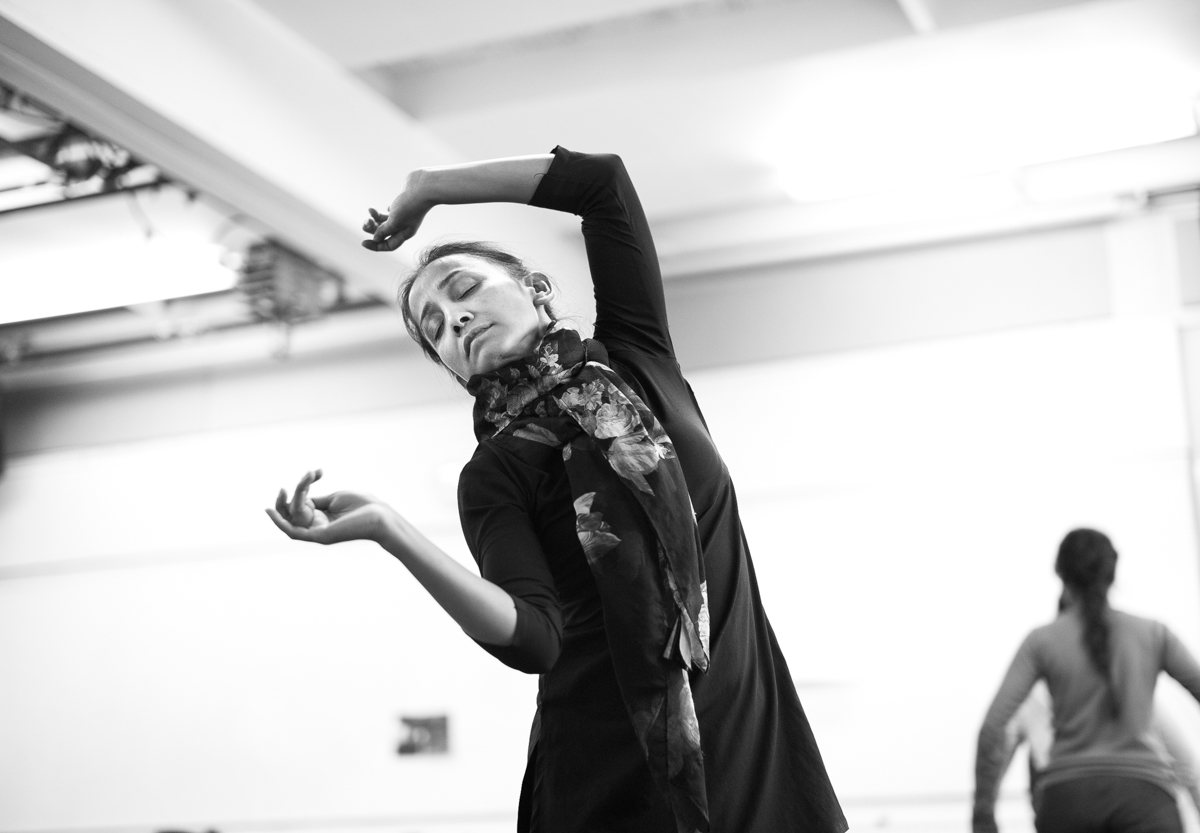
Amina Khayyam in rehearsal | Image credit: Simon Richardson
The performer, choreographer and educator Amina Khayyam has been making dance-theatre work professionally since 2002, most often of late with a decided emphasis on contemporary notions of justice and women’s rights. <I>Slut</I> was presented at this summer’s Edinburgh Fringe Festival and A Thousand Faces has been touring this autumn. Among her upcoming projects are Amad/Flower Bloom, The Hum in my Heart and From the Lives of the Tawaifs.
“‘You looked very beautiful on stage.’”
“The central motivation for my work comes from a reaction against the ‘exotica’ of South Asian classical dance – the ornamental décor of costumes and jewellery by which the beauty of the dancer is constantly commented upon. It was a remark I often got when I used to perform a lot in my student days at the Bhavan Centre and in earlier performances back in the noughties: ‘You looked very beautiful on stage.’ There was never a comment about the dance.
“…a political hotbed of South Asian artists.”
“This made me examine why I chose kathak. I wasn’t forced or encouraged by family. Far from it. I used to sneak out to attend Alpana Sengupta’s classes in Croydon. Fortunately that path led to some work at Watermans, which at the time was a political hotbed of South Asian artists. I hung out there a lot, seeing work by Parv Bancil, Parminder Sekhon, Shakila Maan, Ajay Kumar and others, getting involved in productions, doing odd admin jobs or even stage management. What I saw in their work was a pioneering exploration of British South Asian identity. Their background was working-class, similar to mine, where they had to wrestle with their families to enter the arts profession purely to ‘say’ something.
“…vulnerable, poor, secluded, marginalised...a world never portrayed…”
“These artists were ahead of their time and inspired me to look at my own art form. I saw the infinite possibilities of kathak to tell stories. If you could tell the story of Krishna stealing butter, which was one of the pieces we had to learn in kathak, then you should be able to tell the story of a woman burned alive in an abusive relationship. Why I’d want to tell that story comes from a second motivation, which was my intrigue about the tradition of South Asian classical arts: the social class of the patron and that of the artist, the latter mainly vulnerable, poor, secluded, marginalised and coming from a world never portrayed in any of the work. I looked around and saw that there were many such stories to tell.
“…why the word depression is unused in South Asian communities…”
“Another feature of the Watermans period was the dramaturgy of the work made there. It was for and from the locality. This taught me to be clear about who I make work for and how – in my case, through workshopping with my targeted audience. You really need to know who they are and learn the cultural nuances they’ll engage with. The decisions to do Yerma, Slut and A Thousand Faces all came from workshops with women’s groups. I am at the moment doing the same for the next work, The Hum in my Heart, which looks at why the word depression is unused in South Asian communities and in some places doesn’t exist at all.
“My stories are about empowering women.”
“I’m neither an essayist nor an academic, neither wanting nor able to present multiple ideas. I tell stories, which by nature will have an arc to convey conflict, but I choose which aspects and view of the protagonist I want to show. I try to present that arc as simply as I can, but add layers for audiences to find other things. My stories are about empowering women. For instance, in Yerma I was more interested in her choices than in presenting the situation from Juan’s side. A Thousand Faces is about how a victim of acid violence perpetrated by her partner overcomes him and herself to face the world. Slut is about a mother’s pain on learning of her daughter’s journey to self-infliction, a story based on real events of a very close friend met at a women’s refuge.
“…if [my targeted audience] didn’t engage, I wouldn’t carry on.”
“An informed review is always something to look forward to, but unfortunately most reviewers are random and ill-prepared. Even the positive ones are so generic and fail to see the form’s detail or the work’s context ‒ political or social ‒ that they’re pointless except to benefit the marketeers. Ultimately, it’s the audiences that matter. I’ve been fortunate to encounter an overwhelming response at every single show the company’s performed, particularly from my targeted audience. Their viewpoint is extremely important to me – if they didn’t engage, I wouldn’t carry on.
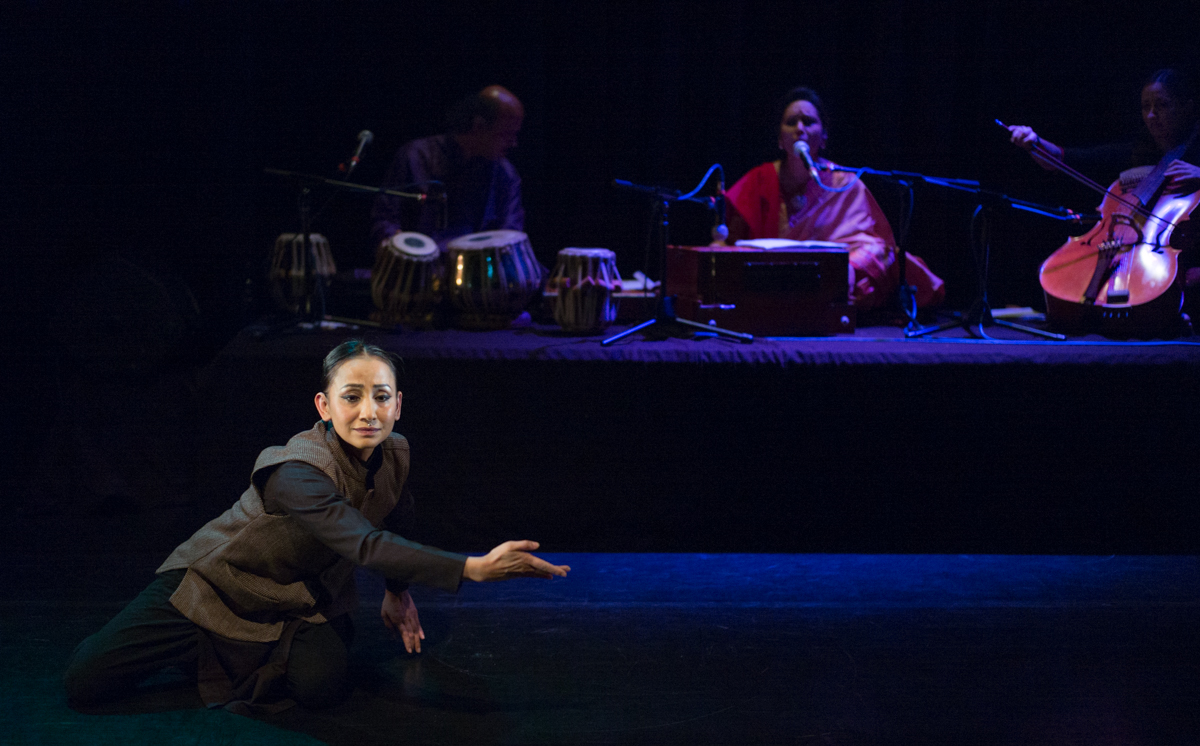
Amina Khayyam A Thousand Faces | Photo credit: Simon Richardson
“I don’t believe that the arts are universal, or that a single work can draw a targeted response from all sectors. The challenge I face – and it may be the same for some other South Asian artists – is in developing a dramaturgy for a work that sits comfortably to a set of critiques of the mainstream stage, yet plays to ‘the other Britain’, i.e. my targeted audience in, say, Luton, Woking or Birmimgham, etc. To what extent should the work be simplified and context explained? Each production of mine is pulled apart after every run and analysed. I believe we achieved a good balance in Yerma. We’ve deployed those principles in A Thousand Faces and are still developing it. In Slut the controversy needs to play in a certain way so as not to offend; the dramaturgy is nuanced to provoke responses from our targeted audience but in a way that speaks to them.
“…there’s a need for it.”
“The best ‘reveal’ from the work I’ve done so far is that there’s a need for it. With that discovery, there’s been a confirmation of the ‘other Britain’ that seldom gets engaged by the professional arts sector. A term funders use about such audiences is that they’re ‘hard to reach’. I find this extremely derogatory. Britain isn’t a jungle where the people living next door cannot be engaged.
“I’ve also learned the richness of our classical forms – how adaptable they are and with no reason to become ‘heritaged’. I will always keep close certain comments made about Yerma. One audience member thought it was all contemporary movement, and yet another called it all kathak. While those insights are my bedrock, I will always also give room to the streak in me to experiment and push boundaries.
“…working with difficult themes isn’t everyone’s cup of tea…”
“I’m proud and privileged to work with amazing artists who are my pillars. We’ve become a family, having known each other since my student days. They’ve empowered me artistically, and I believe l’ve opened them up to different processes of work. It hasn’t always been easy, as working with difficult themes isn’t everyone’s cup of tea, but we know what to expect from each other now. They know not to be comfortable working with me.”
#JeSuis World Première 7‒9 Feb 2018, The Arts Center, NYUAD Abu Dhabi, UAE
#JeSuis UK Première, 15‒16 Feb 2018, Hippodrome, Birmingham, UK
www.aakashodedra.co.uk
www.aminakhayyamdance.co.uk


